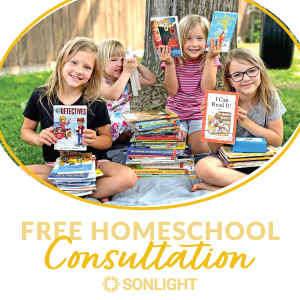We all know how motivation works. If you want employees (or students) to produce quality work, you reward good things and punish bad things. Right?
Well, yes ... sort of.But fascinating research has shown again and again that there is alarge exception to this idea. It turns out that contingent motivators work well for mechanical tasks but NOT for many cognitive tasks. In other words, if you tell your employees "do a great job with this creative project, and I'll give you a giant bonus," chances are they'll perform worse than if you hadn't offered the bonus!
Check out this entertaining video on the topic. It's designed forcorporate audiences, but I think many concepts could apply to homeschools as well. I wonder if we could simply substitute "students" for "employees" and "grades" for "financial rewards" in many of his examples. (And just a warning – this video uses some phrases I wouldn't want children to say.)
So … how do these concepts pertain to homeschooling? I'm sure you can think of more, but consider two applications:
- Contingent rewards work for mechanical tasks
If you need your children to finish their chores faster or crank out those rote math facts quicker, grades or treats might help motivate them to speed up. - Contingent rewards can hinder cognitive tasks
If you keep big rewards hanging overchildren's heads for each task, they might have a harder time performing. I know of a dad who offered his son a big-screen TV if he won a certainchess tournament. But not surprisingly, that kind of pressure usually backfires: it hampers the child's ability to think strategically during the chess games.One of the benefits of homeschooling is that you remove the constant contingent rewards attached to each assignment. In public school, you do an assignment and you get graded on it – every time. Every assignment and test you turn in will come back with a large red letter rewarding or punishing your work. That weight can shut down "out-of-the-box" thinking. If children feel like every assignment needs to earn an "A," they are less likely to take risks and be creative.
But when homeschooled children are free to progress in their studies without incessant grading, they learn other, more intrinsic types of motivation. They can experiment, fail and learn from it. They may even be more open toconstructive criticism because that criticism doesn't always come with a "punishing" grade as well.
So what do you think? Does this research surprise you? It has certainly made me consider how to encourage creativity in the Sonlight office. Does it sparkany new ideas you'd like to try in your homeschool?
Blessings,
Sarita


 With the rise of the new atheism, Christianity is under intellectual attack. One recurring theme on the part of critics is that Christianity is actually harmful to individuals and to the world. It is, they say, a religion that leads to oppression, warfare, opposition to science, and anti-intellectualism.
With the rise of the new atheism, Christianity is under intellectual attack. One recurring theme on the part of critics is that Christianity is actually harmful to individuals and to the world. It is, they say, a religion that leads to oppression, warfare, opposition to science, and anti-intellectualism.

